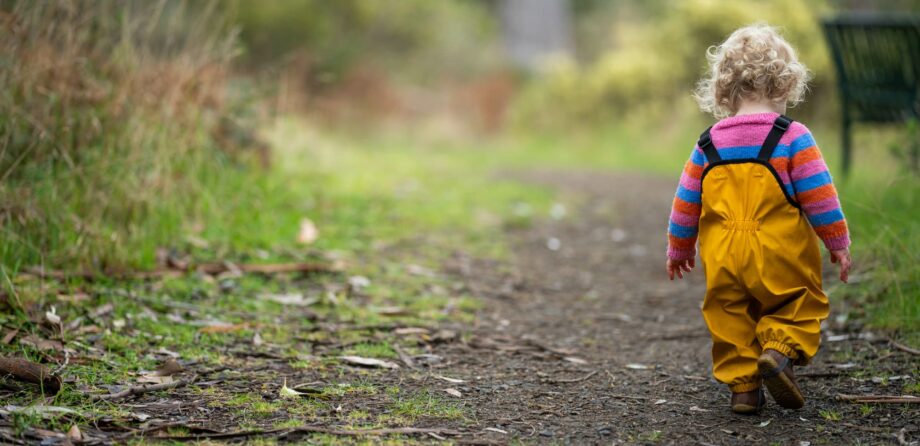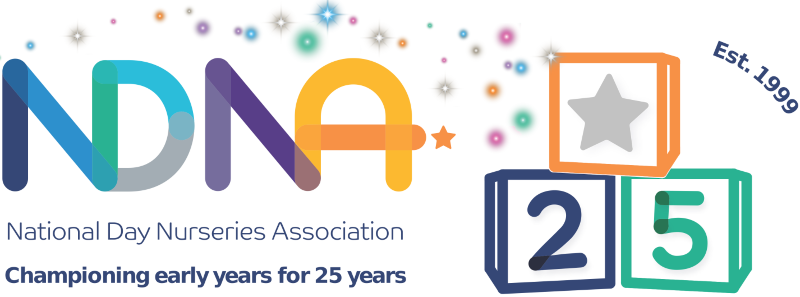
We’re Going on a Bear Hunt EYFS activities
We have teamed up with Walker Books to give you a selection of We’re Going on a Bear Hunt EYFS activities so you can support reading and storytelling at your nursery.
Use our activity guides below, from developing your own storytelling skills, to making stories come alive for your nursery children. These activities can also be shared with parents, to encourage home-learning.
Develop your storytelling skills
This activity will help you develop your storytelling skills as an early years practitioner. Watch Michael Rosen’s video below.
- Observe how he draws you into the story with his voice, facial expressions and his body language
- Repetition, repetition, repetition! It helps children to:
- Recall the story and retell it themselves
- Develop their language skills
- Get drawn into the story because they feel they know it very early on.
Get up and move
Some children will find it hard to sit still for a story, even the most engaging story may have some fidgeters in the back who just want to get up and move! So, why not get up and move while you are telling the story?
- Take the story outside, there are many places to consider e.g. a local wood, park or community garden
- You could change the words in We’re Going on a Bear Hunt and go to the local beach or even down the high street. The beauty of this book is there are no limits!
- Make your trail accessible e.g. if a child is non-mobile, consider how you will support them to take part in the walk
- Use real objects e.g. real grass, a river. This will enable children to feel, smell, hear and see the story
- This is especially important for children with Special Educational Needs and Disabilities (SEND) or for those whose first language is not English. The more real you can make a story the better!
Considerations:
Remember to risk assess all places, even if you have been there before. Consider how you can ensure the safety and welfare of the children whilst you are out of the setting. Think about how accessible the different places will be to all children in your care and meet their needs as required.
Go outside
You do not need to be in the woods or even a large outdoor area to make this fun and interactive.
- Make your own forest using cardboard tubes, tarpaulins, sheets and poles and create your own grass, mud or water
- Add props. Have the children put some wellies on and take them through your own river
- This makes the story come to life. The children will be able to recite it much more easily and they can add the new vocabulary to their knowledge bank with a real meaning attached to it
- Sensory development is very important at this age, especially for children with SEND and EAL.
- Make a barefoot walk using trays with different items for children to walk through
- They can then feel the different surfaces between their toes
- For some children, it may be easier to move the tray to their feet or why not put the tray on a table so the children can move their hands through it instead.
Considerations:
It is vital to know each child’s individual needs. Be aware of any children with sensory processing disorder as part of their SEND. A sensory activity that requires them touching certain items may upset them.
An alternative activity is to use visual flash cards. Flash cards can remind children of what obstacle comes next. They can then use these to order the story themselves or know what comes next in the story so they can prepare.
Engaging parents
If you make the story come to life the children will engage in the activity in a more meaningful way.
- Hide bears around your setting and encourage children to find them
- Invite parents to a stay-and-play event and get them involved
- Print out a special certificate for children to take home
- Suggest to parents to take their child for a walk in some woods at the weekend and re-enact the story
- You could film the activity in nursery and share this with parents.
Story sacks and story stones
To support children with retelling the story and sequencing, create a story sack or use story stones.
- Add items from the story to a sack, or create story stones by printing or drawing characters from the story on to stones
- Ask the children to tell you the story using these props
- Remember to keep these within arm’s reach of children in your story area for children to use independently.
Story boxes
A story box is a great tool for supporting your children to develop their oral literacy.
- Begin by having the children decorate a small sized box
- You could use pictures from We’re Going on a Bear Hunt or just question marks to build anticipation
- Choose one item to go in the box, a bear, a ‘magic’ feather, a missing hat
- Unveil the item with the children
- Model how to develop a narrative by asking: ‘Who do you think could live in a cave like this? A bear… you’re right, a big, brown bear lives in this home and his name is…”
- Think about which open-ended questions could develop the story line:
- What will he eat for his tea?
- Who does he live with?
- What do you think happened to him?
- Who might this belong to?
- How do you think he was feeling?
- What do you think happened next?
- Once children are confident in developing a story with you, ask them to choose the object in the box and begin telling the story themselves.
Create a We’re Going on a Bear Hunt Tuff Spot Tray
- There are many examples on social media and Pinterest of We’re Going on a Bear Hunt Tuff Spot Trays
- Create a small world version of the walk with a toy bear and the different obstacles
- The children can then recall the story and act this out with the toys
- They can also choose to add in new obstacles if they wish to make it more child-led.
Make up new chapters to We’re Going on a Bear Hunt
Children can make up new chapters and invent their own sounds to the story.
- Use accessories, such as a cardboard tube, to make the sounds
- Going down a slide at the playground – “Weeeeeeeee”
- Under a bridge or in a tunnel – “echo, echo, echo”
- On to a bus – “beep beep, beep beep”
- Walking through autumn leaves – “rustle, rustle, rustle”
- Crunchy snow – “crunch, crunch, crunch”
Alternatively, change the story to be a different animal that lives in a completely different climate, a penguin, lion, cheetah etc. Ask the children what obstacles they could come across in this new scenario.
This would enable children to learn about new places and research the environment. This links into Understanding the World (EYFS) and can involve the children using the internet to explore different environments.
Create a cave
- Create a cave in the garden for the children to use as a role play area or a quiet area for them to read their own books. Heighten the excitement by creating it overnight and reveal it to the children in the morning
- Ask the children questions
- Where did it come from?
- What might be inside?
- What do you think we need to explore inside the cave?
- How can we keep ourselves safe?
- Whatever approach you use to draw the children into the story, make it individual to those children in your setting
- Enjoy the time you have with these children in the magical world of stories, this will shine in your voice when you are telling the story
- Remember, you may have told this story over 100 times, but this could be the first time this child has heard it, make it memorable!
Similar Articles
The UNCRC (Incorporation) (Scotland) Act 2024 – What does it mean for nurseries?

Safe sleep in nurseries


